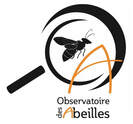Revue d'Hyménoptérologie
Journal of Hymenopterology
ISSN 2727-3806
NOTE |
Premières données sur la présence de l’abeille asiatique Megachile (Callomegachile) sculpturalis Smith (Hymenoptera, Megachilidae) en Europe
|
Nicolas J. Vereecken, Éric Barbier
|
Citation
Vereecken, N. J. & É. Barbier (2009). Premières données sur la présence de l’abeille asiatique Megachile (Callomegachile) sculpturalis Smith (Hymenoptera, Megachilidae) en Europe. Osmia, 3: 4-6. https://doi.org/10.47446/OSMIA3.3
Published (online) 2009
Indexation • Archivage - Archiving
Références - References
Vereecken, N. J. & É. Barbier (2009). Premières données sur la présence de l’abeille asiatique Megachile (Callomegachile) sculpturalis Smith (Hymenoptera, Megachilidae) en Europe. Osmia, 3: 4-6. https://doi.org/10.47446/OSMIA3.3
Published (online) 2009
Indexation • Archivage - Archiving
- DOI: https://doi.org/10.47446/OSMIA3.3
- Zoobank (ICZN): http://zoobank.org/5684DDC4-851E-43F2-9F45-11D33370978B
- HAL (CNRS-INRAE): https://hal.archives-ouvertes.fr/hal-03029425
- Zenodo (CERN): https://zenodo.org/record/4394462
Références - References
- Ascher JS, 2001. Hylaeus hyalinatus Smith, a European bee new to North America, with notes on other adventive bees (Hymenoptera: Apoidea). Proceedings of the Entomological Society of Washington 103 : 184-190.
- Batra SWT, 1998. Biology of the giant resin bee, Megachile sculpturalis Smith, a conspicuous new inmigrant in Maryland. The Maryland Naturalist 42(1-2) : 1-3.
- Boersma PD, Reichard SH & Van Buren AN, 2006 (éds). Invasive species in the Pacific Northwest. University of Washington Press, USA.
- Cane JH, Griswold TL & Parker FD, 2007. Substrates and materials used for nesting by North American Osmia bees (Hymenoptera: Apiformes: Megachilidae). Annals of the Entomological Society of America 100 : 350–358. https://doi.org/10.1603/0013-8746(2007)100[350:SAMUFN]2.0.CO;2
- Eickwort GC & Ginsberg HS, 1980. Foraging and mating behaviour in Apoidea. Annual Review of Entomology 25: 421–446. https://doi.org/10.1146/annurev.en.25.010180.002225
- Franzén M, Larsson M & Nilsson SG, 2007. Small local population sizes and high habitat patch fidelity in a specialised solitary bee. Journal of Insect Conservation 13 : 89-95. https://doi.org/10.1007/s10841-007-9123-4
- Gathmann A & Tscharntke T, 2002. Foraging ranges of solitary bees. Journal of Animal Ecology 71 : 757-764. https://doi.org/10.1046/j.1365-2656.2002.00641.x
- Greenleaf SS, Williams NM, Winfree R & Kremen C, 2007. Bee foraging ranges and their relationship to body size. Oecologia 153 : 589-596. https://doi.org/10.1007/s00442-007-0752-9
- Griswold TL, 1986. Notes on the nesting biology of Protosmia (Chelostomopsis) rubifloris (Cockerell). The Pan-Pacific Entomologist 62 : 84–87. ia601001.us.archive.org/30/items/biostor-246457/biostor-246457.pdf
- Hinojosa-Diaz IA, 2008. The giant resin bee making its way west: first record in Kansas (Hymenoptera: Megachilidae). ZooKeys 1 : 67-71. https://doi.org/10.3897/zookeys.1.17
- Iwata K, 1933. Studies on the nesting habits and parasites of Megachile sculpturalis Smith (Hymenoptera, Megachilidae). Mushi 6 : 4-26.
- Kapyla M, 1978. Foraging distance of small solitary bee, Chelostoma maxillosum (Hym., Megachilidae). Annales Entomologici Fennici 44 : 63–64.
- Linsley EG, Rick CM & Stephens SG, 1966. Observation on the floral relationships of the Galápagos carpenter bee. The Pan-Pacific Entomologist 42: 1-18. biostor.org/reference/228276
- Mangum WA & Brooks RW, 1997. First records of Megachile (Callomegachile) sculpturalis Smith (Hymenoptera: Megachilidae) in the continental United States. Journal of the Kansas Entomological Society 70(2) : 140-142. www.jstor.com/stable/25085766
- Mangum WA & Sumner S, 2003. A survey of the North American range of Megachile (Callomegachile) sculpturalis, an adventive species in North America. Journal of the Kansas Entomological Society 76(4) : 658-662. www.jstor.com/stable/25086168
- Matteson KC, Ascher JS & Langellotto GA, 2008. Bee richness and abundance in New-York city urban gardens. Annals of the Entomological Society of America 101(1) : 140-150. https://doi.org/10.1603/0013-8746(2008)101[140:BRAAIN]2.0.CO;2
- McMullen CK, 1993. Flowering-visiting insects of the Galápagos Islands. The Pan-Pacific Entomologist 69(1) : 95-106. biostor.org/reference/244737
- Messer AC, 1984. Chalicodoma pluto: The world’s largest bee rediscovered living communally in termite nests. Journal of the Kansas Entomological Society 57 : 165-168. www.jstor.com/stable/25084498
- Michener CD, 2007. The Bees of the World, second edition. The Johns Hopkins University Press, Baltimore.
- Peat L, 2007. Xylocopa violacea excitement. BWARS Newsletter, Autumn 2007 : 26-27.
- Philipp M, Bocher J, Siegismund HR & Nielsen LR, 2006. Structure of a plant-pollinator network on a pahoehoe lava desert of the Galápagos Islands. Ecography 29(4) : 531-540. https://doi.org/10.1111/j.0906-7590.2006.04546.x
- Praz C, Müller A, Danforth B, Griswold TL, Widmer A & Dorn S, 2008. Phylogeny and biogeography of bees of the tribe Osmiini (Hymenoptera: Megachilidae). Molecular Phylogenetics and Evolution 49(1) : 185-197. https://doi.org/10.1016/j.ympev.2008.07.005
- Raw A, 2004. Ambivalence over Megachile. Dans BM Freitas & JOP Fereira, Solitary bees - Conservation, rearing and management for pollination. Federal University of Ceara, Brazil, pp.175-184.
- Schwarz MP, Fuller S, Tierney SM & Cooper SJB, 2006. Molecular phylogenetics of the exoneurine allodapine bees reveal an ancient and puzzling dispersal from Africa to Australia. Systematic Biology 55 : 31–45. https://doi.org/10.1080/10635150500431148
- Tsuneki K, 1970. Bionomics of some species of Megachile, Dasypoda, Colletes and Bombus. Etizenia 48 : 1-20.
- Wu Y, 2005. Fauna Sinica: Insecta Volume 44: Hymenoptera Megachilidae. Beijing [En Chinois, accompagné d’un résumé en anglais].










